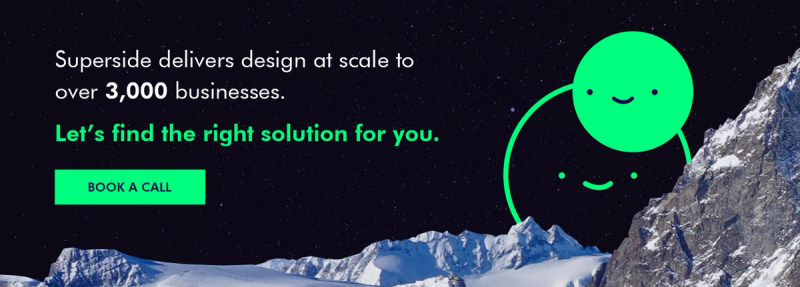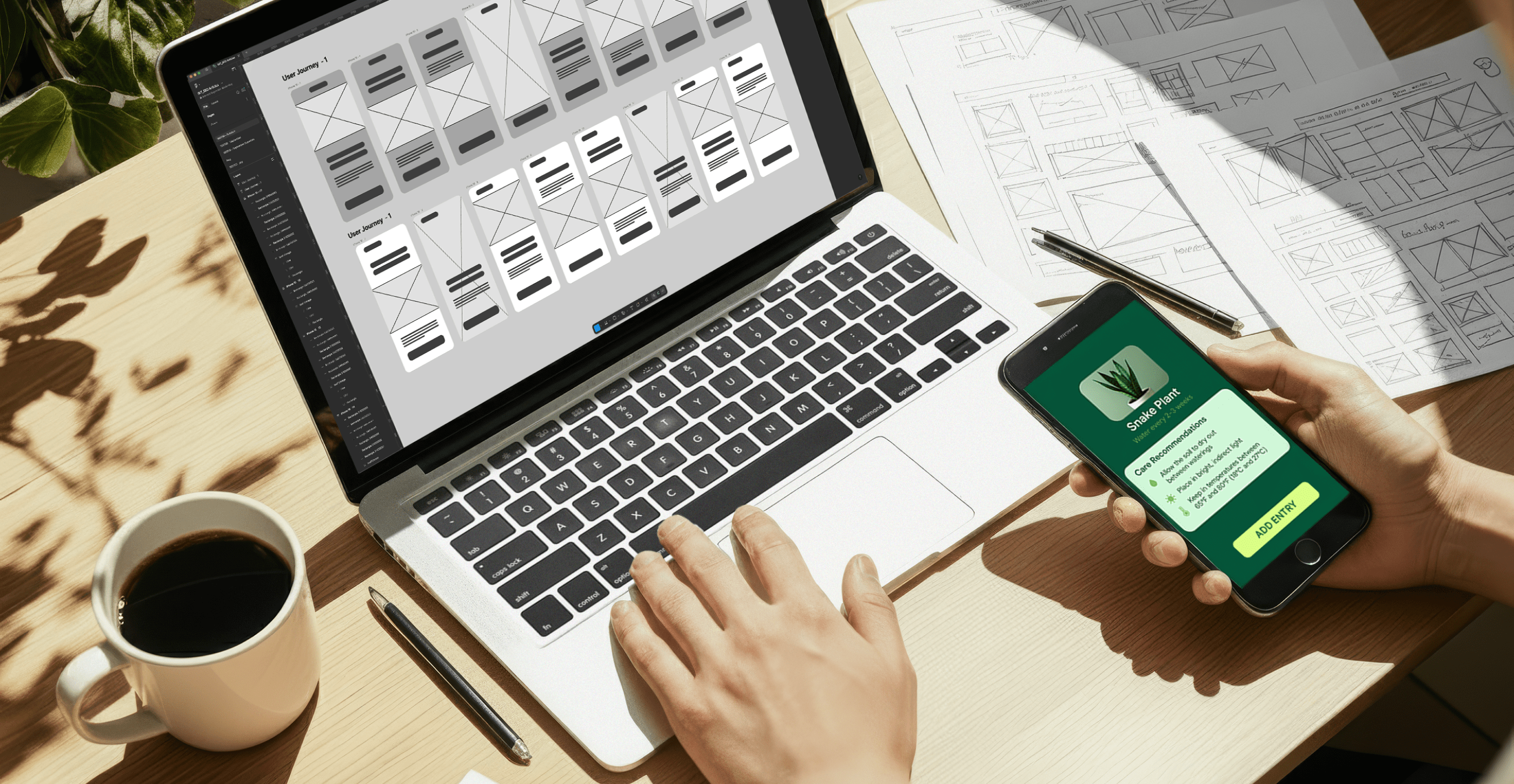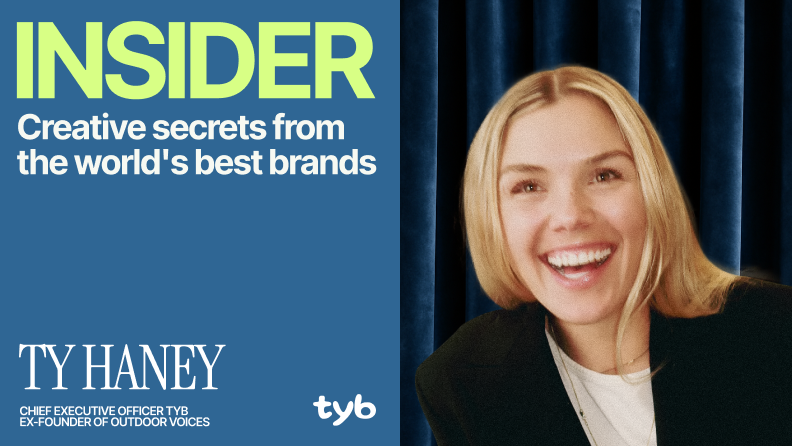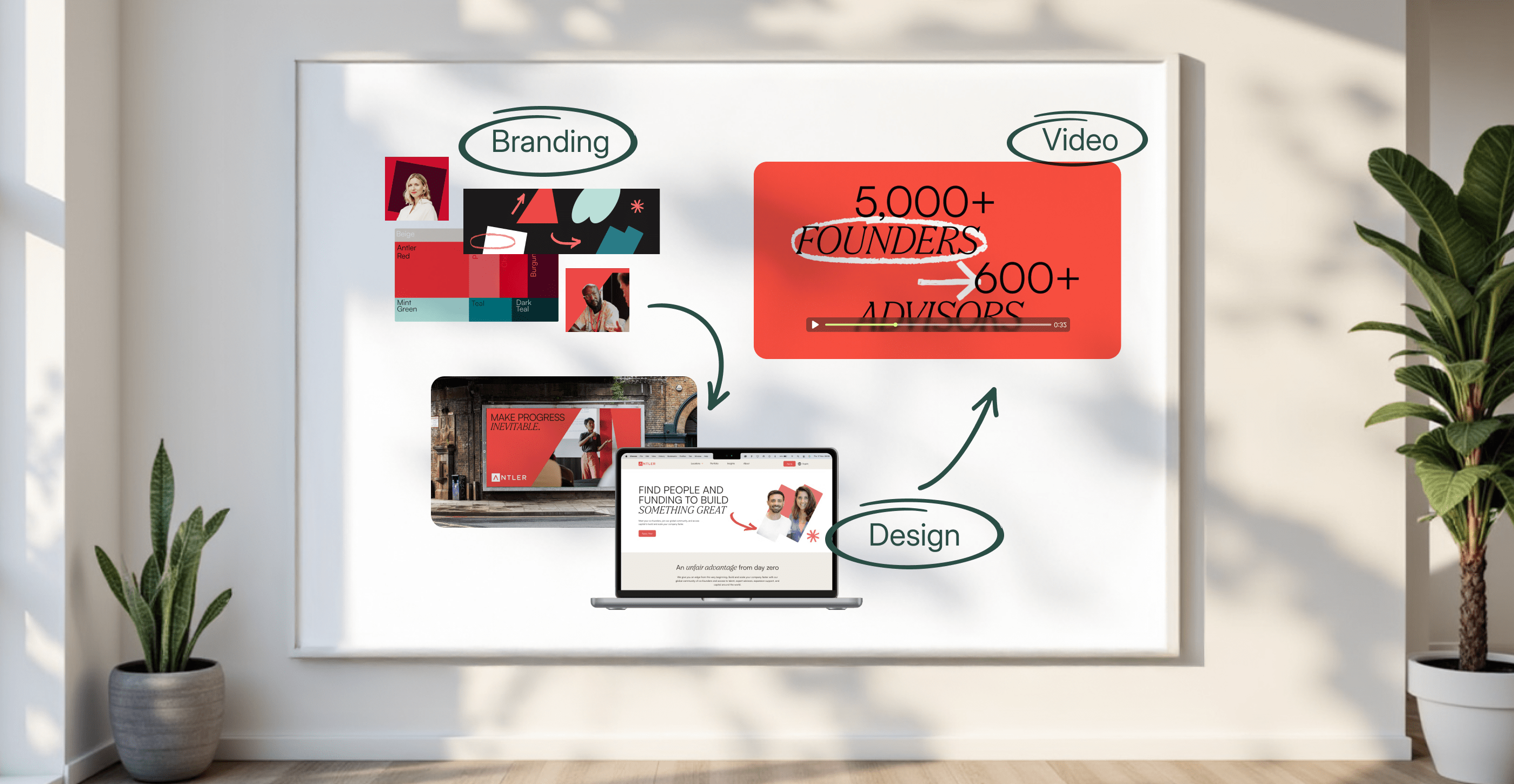
2019 was a big year for rebrands. From Slack to Sears, a lot of companies took the plunge and decided to give their brand a facelift (though a few ended up doing more of a faceflop).
When a company decides to do a rebrand, it should really come out of a well-researched need, not a whim. For example, when Dunkin’ Donuts dropped the “Donuts” in early 2019, they made the change to put emphasis on the fact that they’re now about more than just doughnuts—they also serve fancy drinks like nitro-infused cold brew and have digital ordering kiosks. Haters can hate, but it actually made a lot of sense. Similarly, Android knew that initially their brand was targeting a more niche developer community, but that all changed—their market share has since exploded, and they updated their brand to reflect that change.
In this blog we outline nine of the best rebrands from 2019, discussing why they stood out above the rest. For a lesson learned, we also examined a couple of not-so-successful and controversial 2019 rebrands. Let’s get to it!
The Best Rebrands of 2019
1. Android Rebrand
Designed by: Huge
In August, Google’s Android operating system took on a fresh new look to reflect the shift in its target market. The most obvious change from the 2014 logo is the clean, all lower-case typeface, following suit with brands like Asana and AirBnb. Another major change is a simplified Android robot (also known as Andy), that is no longer full-bodied. Only Andy’s head now appears in the logo, a decision that was made to allow the robot to appear more expressive and resonate more easily with consumers.
“Initially the logo was meant for the developer community, but it quickly became consumer-facing.”
— Irina Blok, designer of the original Android logo
What went well:
Android looked into and firmly understood the shift in its target audience, leading to an effective rebrand that spoke to them. They shifted their original focus on developers to a wider consumer audience, and their new logo and brand reflect this.
Take a look at Androids new brand video:
2. Discovery Channel Rebrand
Designed by: Roger
With Netflix’s nature documentaries growing in popularity, Discovery has been stepping it up with a fresh take on its branding, opting for a simpler, more modern aesthetic. In April, the company swapped out the photo-realistic Earth for a smaller line-art style globe, neatly tucked into the letter D.
The open letter D in this design allows Discovery to use the letter as their main identifier, which works well in tight spaces like social media profile images, or website favicons. It also gives them the opportunity to be more playful in their ads by using the D as a sort of frame within an image.
Image from Brand New.
See here for more inspiration on environmental logo design.
What went well:
The new brand is stronger than ever, projecting an image of authority and global presence. Their new logo puts emphasis on their company name, balancing the hierarchy in the design. Overall, it wins with simplicity.
3. Duolingo Rebrand
Designed by: Johnson Banks
Online language-learning platform Duolingo rebranded in September 2019, having been around since 2013. The rebrand afforded the company a way to unify its look and feel across all of its platforms and channels, from the website to the app. Inspired by Duolingo’s already cute and quirky in-app illustrations, their new logo adds some playfulness to the brand.
Images from Johnson Banks
Duolingo did a great job of highlighting the ways in which their logo has evolved through visuals, which is something they likely have documented in a brand style guide. Style guides are super important, especially for a company that just rebranded. They will often caintain information on the color palette, brand story, logo rules and more.
What went well:
The new wordmark logo’s typeface uses elements from the app’s owl mascot, further solidifying unity and consistency in the brand, making way for easier recognition. The green is also a bit more prominent, making it stand out more than the previous design.
4. Energizer Rebrand
Designed by: DDW
To stand out amongst competitors—especially one with an all-black and copper palette—in June Energizer decided to take a fun approach to rebranding (the first Energizer rebrand since 2008). Displaying the very opposite in its visual branding, they opted for a clean and lighthearted design. In a fresh take on the long-standing logo, the new logo text slants upwards to the right, translating a sense of movement and speed.
“We spent three years developing our new look, talking with consumers and researching their preferences to deliver an experience that’s both powerful and fun.”
— Lori Shambro, the vice president of global marketing at Energizer
And they added a more playful version of their iconic rabbit mascot (see below). Same cool shades, but a little more fun than the old one.
What went well:
The white packaging jumps out at consumers from store shelves—as nearly all battery brands have darker color palettes in their branding, this new, lighter look visually separates the Energizer brand from the competition. And by putting more emphasis on the bunny, Energizer has tied their iconic commercials and ads into their new packaging.

5. Mastercard Rebrand
Designed by: Pentagram.
In an ever-evolving world of payment methods and technology, MasterCard was eager to reflect a readiness and optimism about this shift in the financial industry. In January, the company underwent an evolution of its brand identity to reflect its part in modern technology. This began with a new, simplified and modern brand mark—their unmistakable overlapping red and gold circles are now a flat logo design, expressing confidence in its brand recognition with the removal of the wordmark. Though not implemented across all touchpoints, it’s still a bold and powerful move.
Image from Pentagram
What went well:
As an iconic and well-established brand, MasterCard had the option to remove its wordmark completely. But because they kept the similar two overlapping circles, the brand is still recognizable.
Overall the new logo is more fresh, the colors are more bright and inviting, and by removing the wordmark, MasterCard now has more flexibility to incorporate the brandmark into other marketing collateral. Overall, it's a strong brand identity that allows for Mastercard to continue to grow and expand their business.
6. Slack Rebrand
Designed by: Pentagram
Last January, Slack took a big risk by removing the beloved and relevant hashtag symbol from its logo. But the company had its reasons. The old logo was essentially useless. It was difficult to use on anything that didn’t have a white background, and was often used inconsistently, which is a big no-no in branding 101.
Making use of its existing vibrant palette, the company built upon that, establishing a consistent look across all visual touchpoints. As a digital brand it was crucial for Slack to nail it.
Ad design by Pentagram
What went well:
The new logo is fresh and modern. Its strong logomark uses shapes resembling chat bubbles—a smart way to help illustrate what the platform does.
Though the new brandmark is slightly different, it still resembles the old one, bringing comfort in familiarity.
7. Staples Rebrand
Designed by: Unknown
Staples was long due for a rebrand. Though the old logo was well-loved with its quirky bent staple “L”, it was moving quickly into outdated territory. It was time for a change. So, in April, the office supply corporation revamped its image while keeping the best of what came before.
The staple remains in the new logo and also resembles a desk, providing a double meaning. The choice of typeface says “friendly yet professional,” resonating with Staples’ target market. With the new logo refresh, they also announced new in-house labels including the new brand Tru Red, and a product catalogue called The Loop.
Images from Brand New
What went well:
The new staple/desk logomark can be used in a wide variety of collateral, allowing the brand to further create consistency and recognition across its marketing initiatives.
8. Volkswagen Rebrand
Designed by: VW Design Chief, Klaus Bischoff
With the goal of moving towards an electric car future, and plans to have 20 electric models by 2025, Volkswagen was in need of a brand refresh. To work well within digital platforms, in September they stripped down their iconic blue and silver chrome logo, and emerged with a flat minimalist logo design. The new navy color was introduced, giving the brand the fresh and modern look it needed.
According to the Volkswagen Newsroom: “The new visual language of the brand will be very different from that presented by Volkswagen to date—it will be bolder and more colorful. The focus will be on people. Volkswagen will no longer concentrate on perfectionism in vehicle photography. In future, the main objective will be to present realistic situations that customers can identify with.”
Image from Brand New
For the first time in the brand’s history, Volkswagen started using a female voice to present its vehicles in commercials, likely supporting #thefutureisfemale movement.
What went well:
With a fresh logo that speaks to modern audiences and the decision to use a female voice in its advertising, Volkswagen demonstrates forward-thinking and relevance in today’s automobile market.
2019 Rebrands that didn't Go So Well
9. Sears Rebrand
One of the most memorable logo fails of 2019 was Sears, the iconic department store founded in 1893 (yes, you read that correctly). Already having a rough year with sales declining and trying to bounce back from bankruptcy, this early May rebrand should have been their shining star. The thing is, it's not that their new logo is bad—it's just that the house inspired brandmark looks a heck of a lot like Airbnb’s.
"Sears has a wealth of challenges facing them. And, I hate to use the expression ‘putting lipstick on a pig,’ but I think there were more critical issues to address than putting a new face on the store.”
— Jim Cusson, President of Theory House, quoted by CNBC
Sears' rebrand caused a lot of conversation on the internet, and tainted the new Sears logo and rebrand. Though some people defended the new brand and slogan, this was likely not the reaction Sears was hoping for.
Bonus: Looka Rebrand
A lesser known company with an epic rebranding lesson to share is Looka, an online logo maker. Though their new brand is top notch with some really thoughtful design, the outcome of the rebrand wasn’t as peachy. Not even two years after its launch as a company, Looka underwent a massive rebrand in preparation for the expansion of its product offerings. Part of this rebrand involved changing the company’s name altogether from the former “Logojoy.” Below is a cool illustration of the meaning behind the new brandmark.
Image from Looka
“Rebrand, they said. It’ll be great, they said.”
– Dawson Whitfield, CEO of Looka
Company-wide layoffs followed just six months after the rebrand because the company lost 80 percent of its website traffic and half its revenue. Since many of Logojoy’s customers had been converted off of organic traffic to the site, the impact of changing the URL and name was too much to recover from completely.
Had the company kept the name “Logojoy,” the rebrand likely would have had a dramatically different outcome. And Looka isn't alone — there are a lot more rebrand failures to learn from that cost companies more than the price of the rebrand itself (which can be steep).
Conclusion
2019 was a big year for rebrands! Here’s hoping that 2020 brings in even more fresh updates. As you can see, not all rebrands end up the way they were planned. Hopefully these rebrand examples have given you a better idea about the pros and cons of rebranding, along with some much needed inspiration if you're looking to do your own. While you're at it, check out our 2018 rebrand list for even more ideas.
We’re happy to say that Superside has helped brands big and small successfully rebrand (or just plain brand) its business. Heck, we did our very own rebrand this year!
If you’re in need of a rebrand and are unsure of where to start, check out our branding services to learn more about how we can help you launch your brand to the world.
You may also like these

10 best product design companies of 2025
In a world flooded with digital products, the difference between a product that gets adopted by target audiences and one that gets ignored is design.Modern users are no longer merely satisfied with products that work. They seek intuitive, beautiful experiences and products they truly enjoy using. In sectors such as SaaS, consumer tech, healthcare and fintech, design shapes brand perception, product adoption, user engagement and, ultimately, loyalty.For enterprises and high-growth brands, the stakes are high. Every design misstep and delay could translate into lost relevance. Yet many in-house design teams have too little bandwidth to deliver products at the speed, scale and quality now required. On the other hand, traditional agencies move too slowly or aren’t built for the level of iteration modern tech enterprises require.This is where a top-notch, dedicated product design service can tip the balance in your favor. In this article, we unpack why great product design is a non-negotiable. We also share 10 product design companies that can help you create an in-demand, highly successful product.Why great product design is a competitive advantage for enterprise brands
Why brands that build community get customers for life
Ads don’t seem to hit like they used to. Your customer acquisition cost is through the roof. And even when you do bring in customers, it feels like they’re only with you for a moment before disappearing forever. Some brands might be able to sustain their growth in these conditions, either because they have a massive war chest or their customers make massive transactions.But for most, there’s a better way to grow. By building a community and a fan base, you can get customers for life.At Superside’s Insider Summit, Ty Haney, three-time founder and current CEO of Try Your Best, shared how her approach to community has catapulted the brands she’s built to new heights—and how her latest venture has turned this into a business.What is community-led growth?In short? Shifting from acquiring customers to building a fan base. It means creating experiences that reward customers, granting them access to exclusive perks, and giving them something to get excited about beyond the transactional. It’s about giving them opportunities to become obsessed with your product and your brand until they become micro-influencers.
5 creative marketing services that change enterprises’ ROI in 2025
With digital advertising projected to bring in 73.2% of global ad spend, the pressure to consistently produce standout creative at scale is real. For a chance to connect with target customers, enterprise teams must now deliver high volumes of top-quality marketing creative across multiple channels.For most enterprises, increased output is only one part of the challenge. It’s usually just as tough to achieve consistency, speed and good results, especially if resources are limited. And limited they are: Our recent Overcommitted report confirmed that today’s creative teams simply juggle too much.Fortunately, many top marketing executives have come to realize their in-house creative departments can’t do it all themselves. Superside’s customers, for example, experience first-hand how a combination of strategy, data, AI-driven workflows and creative muscle can help them scale smarter, give bandwidth back to their teams and deliver a high ROI.Want to improve your creative production output and deliver eye-popping creative performance results? In this article, we explore what creative marketing is and how it can be applied in enterprise environments such as yours. In addition, meet the top creative marketing services that can help your enterprise achieve stronger results. Let's dive in!








